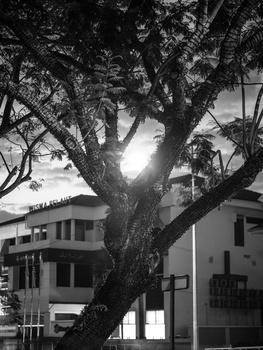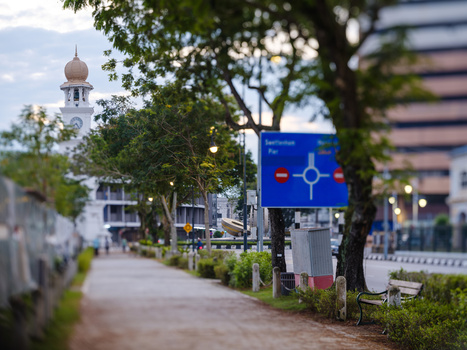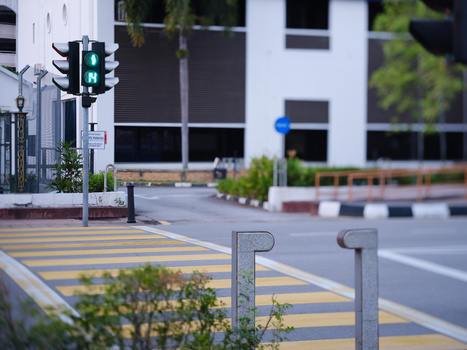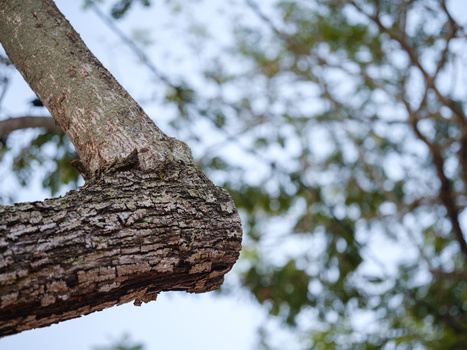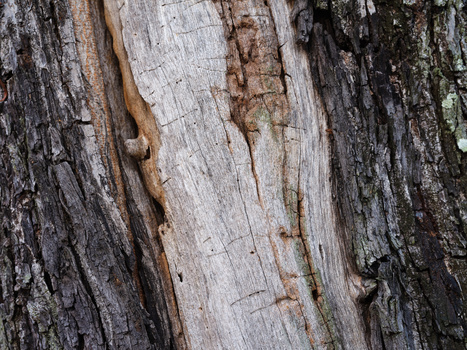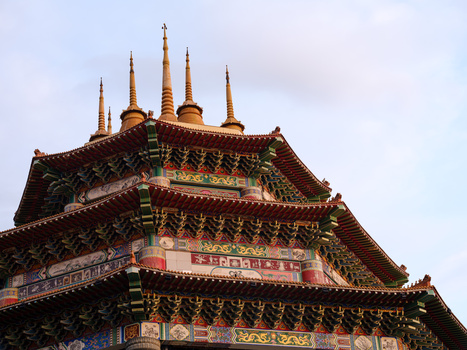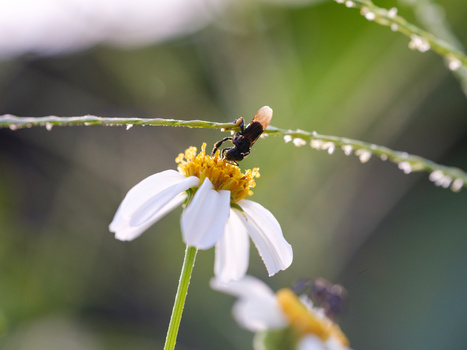Early adopters of the Fujifilm GFX system, many of whom migrated from Canon and Nikon, have long awaited a native tilt-shift solution to meet their professional needs.
While Fujifilm answered this demand last year with the launch of two native 30mm and 110mm tilt-shift lenses, their high price points kept them out of reach for many photographers. Meanwhile, major players like Canon, Sony, Nikon, Leica, and Panasonic have largely ignored this niche in the mirrorless ecosystem. Laowa has stepped in to fill the void, with their latest 100mm f/2.8 tilt-shift 1x macro lens, launched alongside a 55mm f/2.8 tilt-shift lens. Available in various major mounts, these lenses not only offer tilt and shift functionality but also redefine creative possibilities in fields like product, architecture, and fine art photography. With this launch, photographers now have an affordable, versatile alternative to explore precision, depth-of-field control, and enhanced compositional flexibility in tilt-shift photography.
Build Quality
I'll be honest, the size and weight are the first things that stand out. This is clearly a well-built lens, and you can feel its solid construction as soon as you pick it up. Weighing approximately 1.4 kg and measuring 179 mm in length, the Laowa 100mm f/2.8 Tilt-Shift lens is made entirely from metal and glass, including its robust lens hood, with lens caps being the only exceptions. The focusing barrel, engraved with a depth-of-field scale, operates smoothly, perhaps too smoothly, causing unintentional focus shifts, particularly when shooting top-down compositions and a focus distance of around the 0.5 m to 0.6 m focus range. To counter this, a simple fix like securing the barrel with gaffer's tape can prevent your focus from shifting. Given its substantial size and weight, Laowa has thoughtfully integrated an Arca-Swiss compatible metal tripod collar mount into the lens design. This feature not only alleviates the strain on your camera mount but also allows easy access to the rotation of the lens. However, unlike traditional one-piece tripod collars, this design is a three-part system comprising the collar built onto the lens barrel, the collar mount, and the Arca-Swiss plate. This modular design approach, in my opinion, greatly compromises the rigidity by introducing multiple potential points of instability, whether at the plate connection or the collar support on the barrel. Fortunately, any looseness can be quickly resolved by tightening the screws.
Given its substantial size and weight, Laowa has thoughtfully integrated an Arca-Swiss compatible metal tripod collar mount into the lens design. This feature not only alleviates the strain on your camera mount but also allows easy access to the rotation of the lens. However, unlike traditional one-piece tripod collars, this design is a three-part system comprising the collar built onto the lens barrel, the collar mount, and the Arca-Swiss plate. This modular design approach, in my opinion, greatly compromises the rigidity by introducing multiple potential points of instability, whether at the plate connection or the collar support on the barrel. Fortunately, any looseness can be quickly resolved by tightening the screws.

Given the lens's front-heavy balance, using the built-in tripod collar mount is strongly recommended. As an added benefit, it will also keep the movements of the lens around the optical center of the lens reducing potential parallax errors.
However, having the lens mounted on the tripod mount creates a whole new set of complications to the movement of the lens because the rotations are cumulative relative to the camera. For instance, changing the tilt axis from horizontal to vertical requires two steps: first, rotating the lens -90° on the tripod collar and then rotating the camera 90° on either the tilt or shift axis. In contrast, with the camera directly mounted on the tripod, the same adjustment requires just one step which is rotating the lens on the tilt or shift axis. Making it simpler and more intuitive to work with.

That said, incorporating the tripod collar’s rotation into the workflow significantly enhances the lens’s versatility. The Laowa 100mm Tilt-Shift lens provides a total of three rotation points, offering unparalleled creative freedom. You can tilt and shift the lens in nearly any direction, regardless of your camera’s orientation.
The first rotation point is located near the bayonet mount, before the shift axis. This point allows a full 360° rotation with click stops every 15° increment. Unlike most lenses, which limit rotation to 90° or 180° in one direction, this lens offers continuous, unrestricted movement. This is an advantage of having no internal electronics or cables to constrain the mount.

The second rotation point is positioned between the shift and tilt axes. Depending on the mount, this point enables independent 90° rotations of either axis. While there are no intermediate click stops, you can align the tilt and shift axes in parallel or perpendicular orientations. For diagonal alignment, adjustments can only be made using either the bayonet mount rotation or the tripod collar rotation.
The last rotation point is located on the lens tripod collar itself, where you can unlock and perform a 360° rotation of the entire camera when mounted. This flexibility allows photographers to achieve greater depth-of-field and perspective control through precise combinations of flexible rotation and independent movements.

One of the most critical aspects of a tilt-shift lens is the functionality of its locking and gear movement knobs. While the knobs on the Laowa 100mm Tilt-Shift lens are large enough for comfortable operation, the lens tends to drop to its lowest position when left unlocked. This issue could be mitigated with a better gearing ratio and increased resistance on both axes. The current setup makes it challenging to execute precise adjustments, especially for technical shoots that demand small incremental movements, particularly on the shift axis.

As mentioned earlier, the lens lacks electronic contacts, meaning aperture control is entirely manual and performed by rotating the aperture ring. This also means your shooting aperture will always match your viewing aperture. In low-light conditions, this can complicate your workflow, as you’ll need to open the aperture to focus and then stop it down again to take your shot. On the positive side, the aperture ring features smooth rotation with gentle clicks at each full stop, offering a tactile and reliable experience.
While the absence of electronic control has its advantages, particularly for reducing flicker in time-lapse or stop-motion photography, it also has a downside. Without electronic contacts, there’s no way to record aperture settings in the EXIF data. While this won’t be a dealbreaker for everyone, it’s a limitation to consider if you rely on EXIF data for meticulous post-processing or cataloging.
Features

Left column: Shift up and down. Centre column: Tilt up and down. Right column: Compounded tilt, shift and rotation movements. Centre row: Zero movements for comparison.

In addition to tilt-shift capabilities, the lens boasts true macro functionality with 1:1 magnification on full frame cameras, an impressive feature given that most tilt-shift macro lenses are limited to 1:2 magnification. The internal focusing mechanism ensures that the lens neither extends nor rotates during focusing. This is particularly advantageous for photographers working with close-up subjects or using circular polarizers, as it minimizes potential disruptions to composition or filter alignment.

The focusing barrel itself is optimized for usability, with a shorter focus throw from infinity to 0.5 meters for quicker focusing on the telephoto end, and a longer throw from 0.5 to 0.32 meters to facilitate precise adjustments during macro work. This dual approach ensures a balance between speed and accuracy, catering to a wide range of photographic needs.

Usage and Image Examples
As this lens is designed as a short telephoto and a macro tilt-shift lens, I will split its usage into three main categories: Telephoto and Panoramic Shift, Telephoto Tilt, and Macro Tilt Shift.
1. Telephoto and Panoramic Shift
Leveraging the lens's shift capability allows photographers to extend the telephoto lens’s angle of view through the shift-stitch panorama technique. By capturing three images with positive shift, zero position, and negative shift, photographers can seamlessly stitch these shots in post-production to create a wider image while maintaining the natural perspective compression of a telephoto lens. You can push the limits by shifting to the extremes in every direction, utilizing the entire image circle to produce a unique panoramic image. For more creative applications, you can also use the shift functions to reframe your shots for better composition, avoiding distractions.


2. Telephoto Tilt
As a telephoto tilt-shift lens, it enables photographers to manipulate the image plane by tilting to reduce the depth of field for creative effects on scenes with far subjects. This creates the well-known “miniature effect,” where both the foreground and background are heavily blurred, leaving only a thin slice of the image in focus. This effect works on the vertical, horizontal, or even diagonal axis as long as you are tilting the lens with your camera straight on.



3. Macro Tilt Shift
In studio environments, the tilt-shift macro capabilities of this lens make it an excellent choice for product, food, and beverage photography. Independent tilt and shift controls allow photographers to fine-tune the focal plane, achieving selective focus and maximizing sharpness in key areas using the optimal aperture settings. From my observation, the lens delivers optimal sharpness at apertures between f/5.6 and f/8, with a slight hint of diffraction softening becoming noticeable at f/11, especially on medium-format cameras.
In the example below, I combined tilting and shifting to create a shot where the entire chocolate packaging remains sharp while the background stays blurred. The image was intentionally captured at f/2.8 to demonstrate the tilting effect and also to exaggerate the background blur to minimize post-production retouching required to clean up the background. This approach highlights the lens’s ability to produce stunning results even in demanding studio setups.
Shifting Comparisons
Adding Tilt
Straight Out of Camera and Retouched

More Sample Images Gallery
Summary
What I Liked
- Excellent sharpness even at f/2.8. Usually, macro lenses that excel in close-up have subpar performance on the telephoto end, but I find this lens balances both ends well.
- 1:1 magnification macro capability on a tilt-shift lens. This is impressive, as most tilt-shift lenses can only achieve 1:2 magnification.
- Competitive pricing.
- Very solid full-metal build quality.
- Unrestricted 360-degree rotation and three-point rotation.
- Smooth focusing ring and a well-spaced focusing range catering to telephoto and macro usage.
- Ability to control both the tilt and shift axes independently.
- Internal focusing with a 77 mm filter thread size, allowing easy use of filters when needed.
What Could Be Improved
- Weight and size reduction.
- Design with a larger image circle to make it a true medium-format lens.
- Add a notch and lock button on the tilt axis. Currently, it is easy to accidentally tilt the lens and decenter it, as there is no notch to indicate the lens is back to the middle or a lock to prevent unintended adjustments.
- Better rotation lock button placement. Currently, it is too close to the bayonet mount, making it hard to rotate when the lens is shifted up.
- Improvements on the shift dial, as the current gearing ratio is quite weak for such a heavy lens.
- Add electronic contacts to record EXIF data.
- Improve focusing barrel tension to prevent it from slipping when shooting top-down.
- Improve flaring control, as the lens currently produces prominent veiling flare when light hits it at certain angles.
 Closing Thoughts
Closing Thoughts
While the Laowa 100mm f/2.8 Tilt-Shift 1x Macro lens offers remarkable performance for its price, it does come with minor quirks. While I personally like this lens a lot, effectively harnessing its full potential requires careful planning, as this is not a lens you can deploy casually. The precise movements demand a tripod for optimal use, and without a clear vision for your shots, the returns may feel diminished. However, for those who need precise control over shift adjustments and depth of field, this lens delivers excellent optical results at a fraction of the cost. Priced at $1,249 and available in E, GF, L, RF, and Z mounts, the Laowa 100mm Tilt-Shift is a budget-friendly option that earns a solid recommendation from me especially for specialized photographers.









